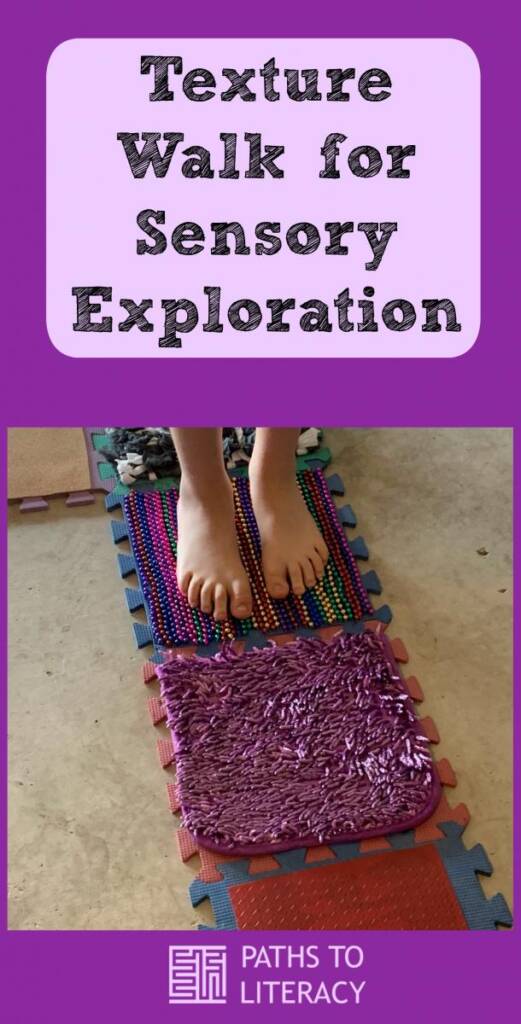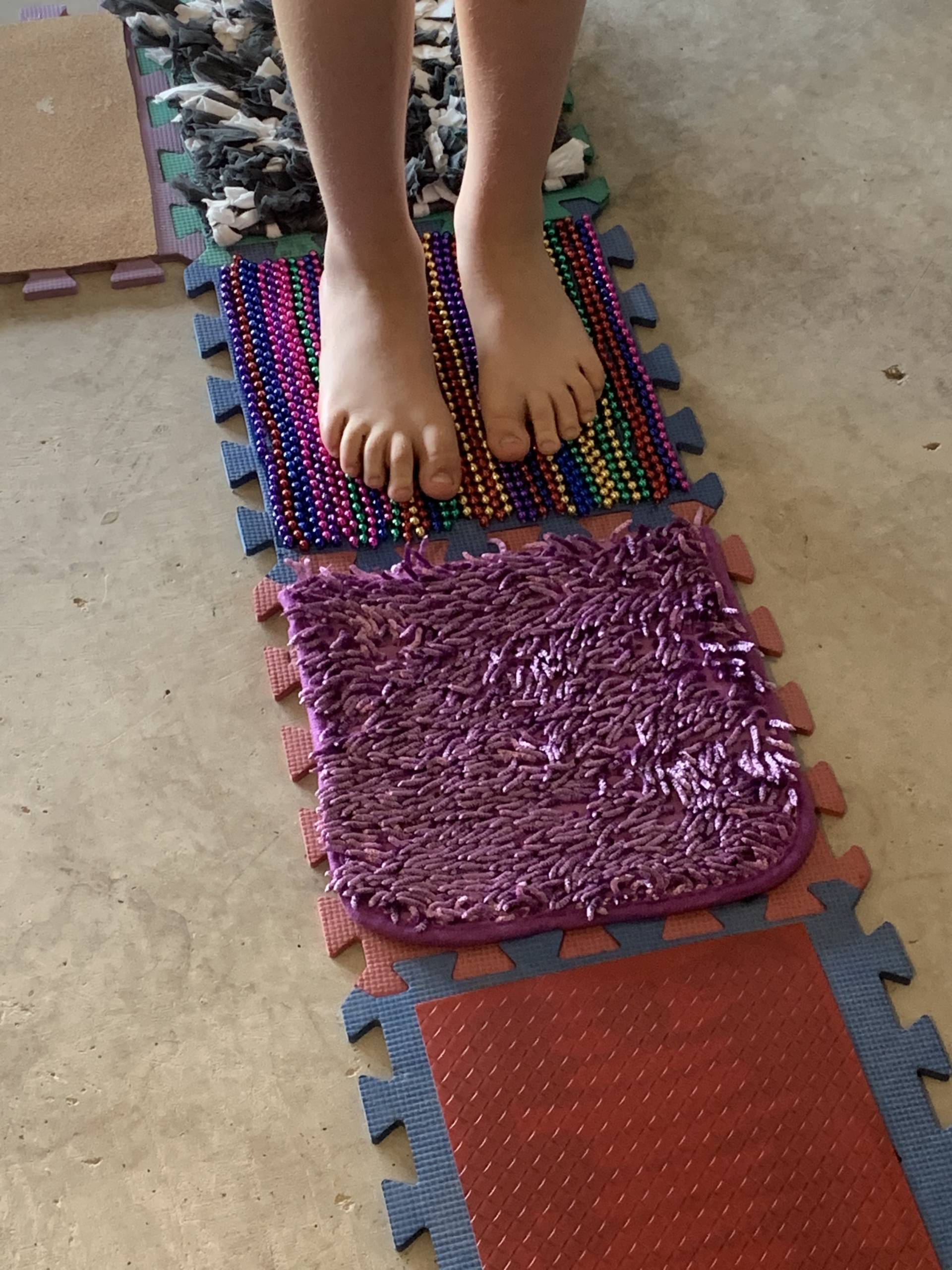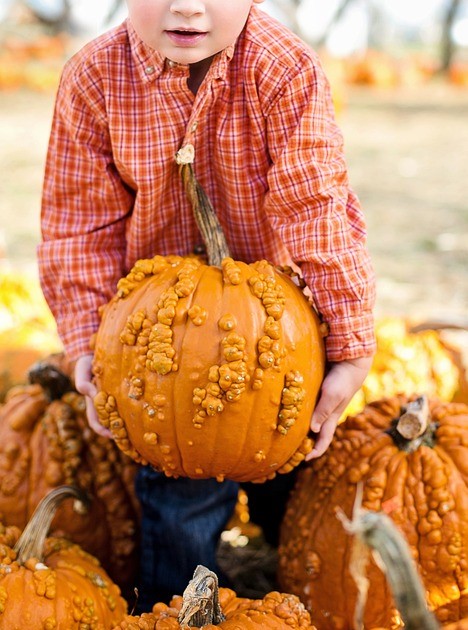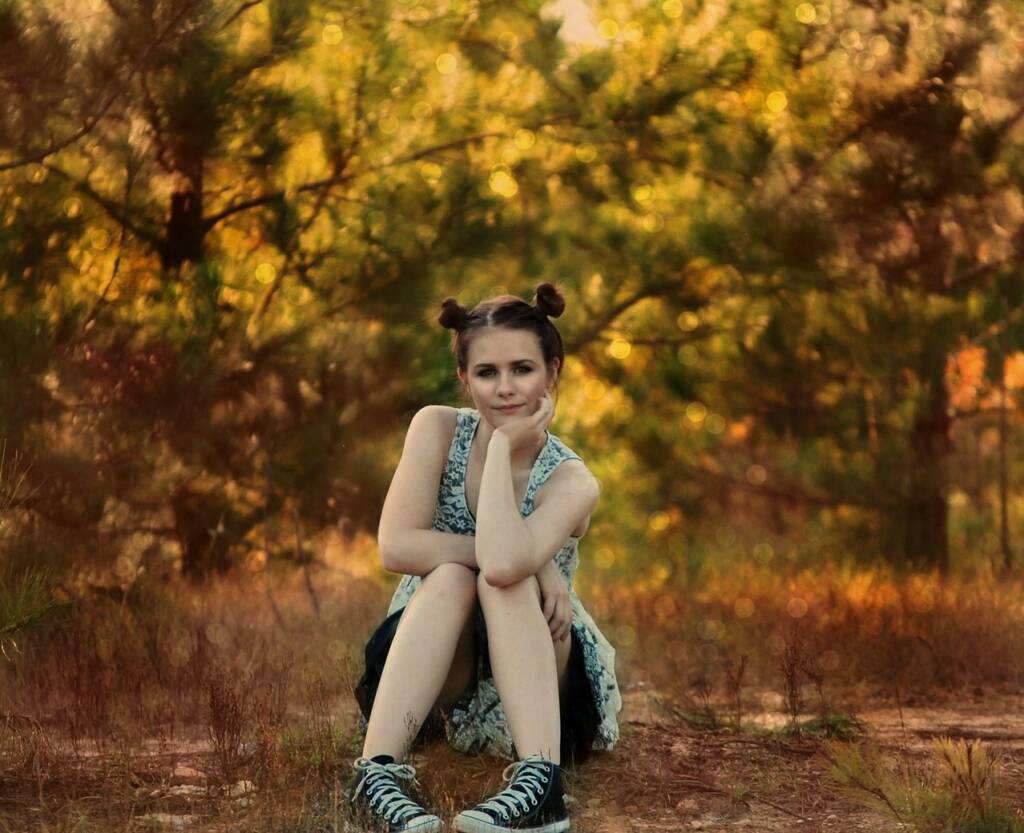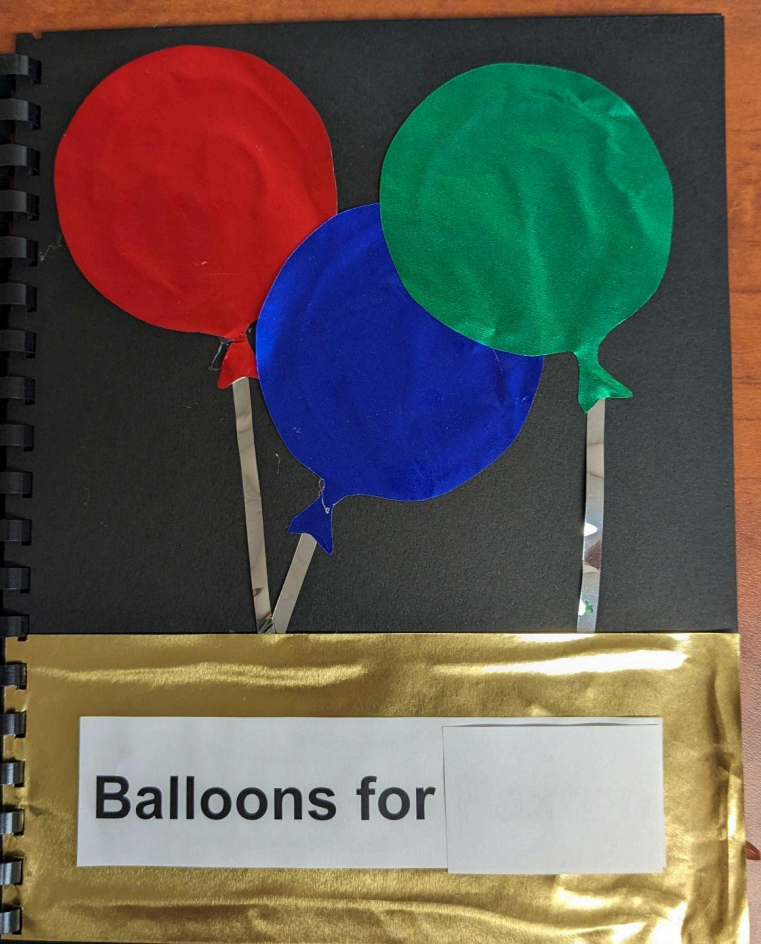Texture walks and sensory exploration can be a way to develop tactile discrimination in the hands and feet, while broadening basic concepts, such as soft/hard and rough/smooth. Children may enjoy exploring while walking, crawling, sitting or touching with their hands the different textures. The sensory input may be calming to some students, and stimulating to others.
I have a student who is quite energetic. She loves to explore textures and loves to go on walks. I suggested that the Orientation & Mobility instructor and I make her a texture walk for those moments she needs a calming activity or an activity to keep her alert. I wanted input from the OT, Speech, classroom teacher, and paras. One of the paras found the image below on Pinterest and shared it with me.
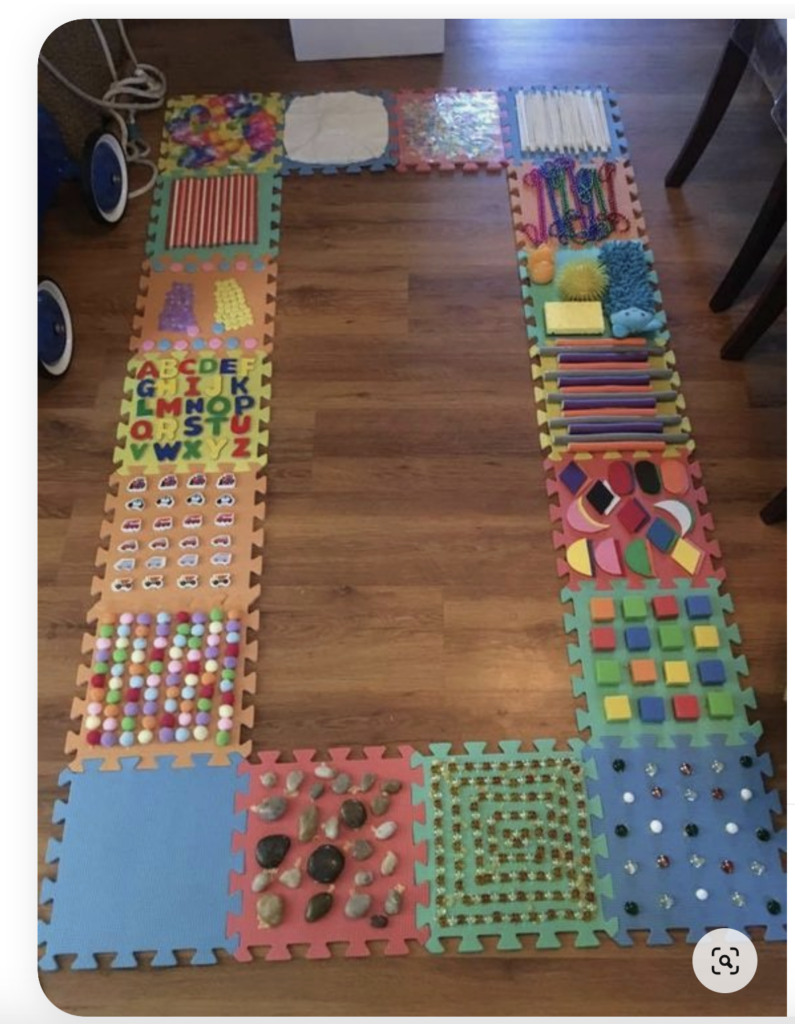
While I was originally thinking of using heavy duty cardboard as the foundation, I loved the idea of using the foam puzzle floor play mats instead, as these would be much more durable. When deciding what textures to use, we made a list of what she likes at school and what textures would not throw her balance off, so she can travel as independently as possible. So using 16 squares, we began…
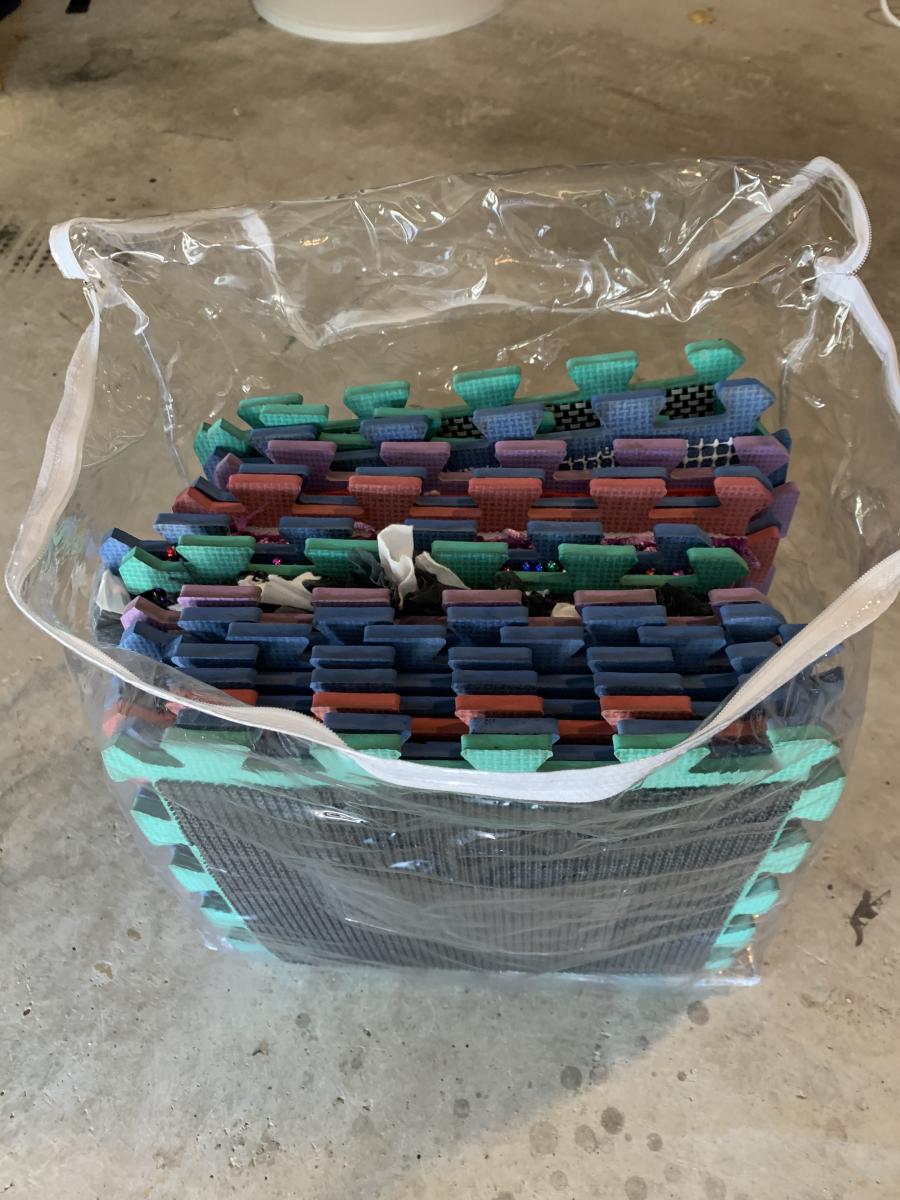
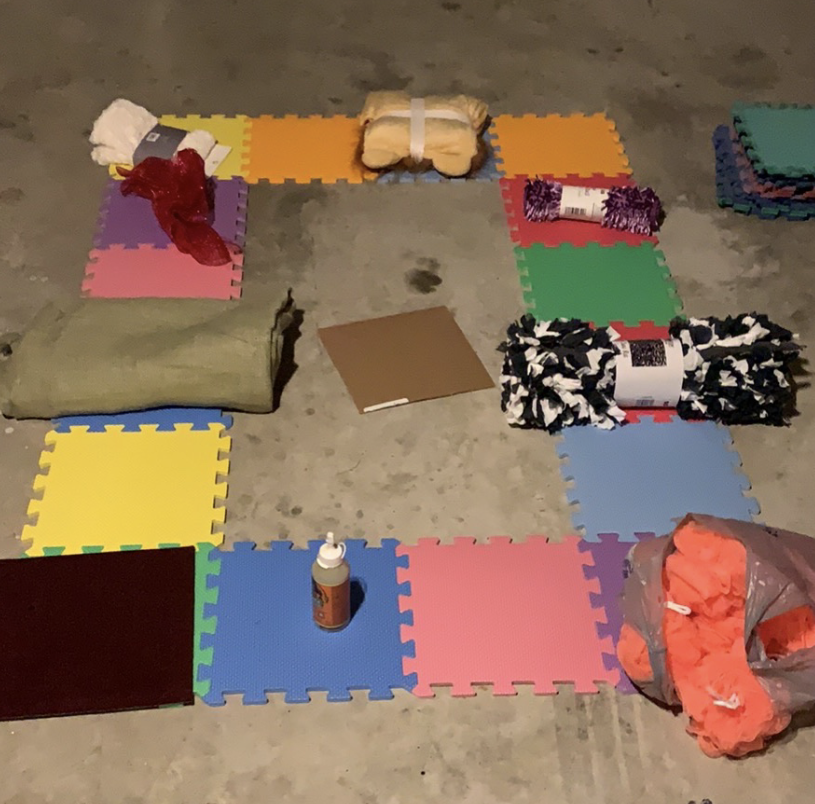
Putting Together the Texture Walk
Soft, rough and bumpy is this student’s jam! I explored things in my garage at home where I have tubs of materials and fabrics. I found some placemats at various discount stores that have amazing rough and bumpy texture. Then I had the problem of making sure I had a variety of textures, at which point I started to glue the items down. Gluing became a headache and I wondered what the best way to affix the different textures would be. I used were clear Gorilla Glue and I used several bottles of this. I also used Liquid Nails, which is a heavy duty construction adhesive. This adhesive worked really well with the carpet and fabric, but not with the more rubbery textures. In order to use the liquid nails, you put the tube in a caulking gun. If you’ve never used one before, ask a family member or neighbor, or ask where you buy the liquid nails to show you how to use it. Luckily, I’ve been using one since I was a little girl working with my father.
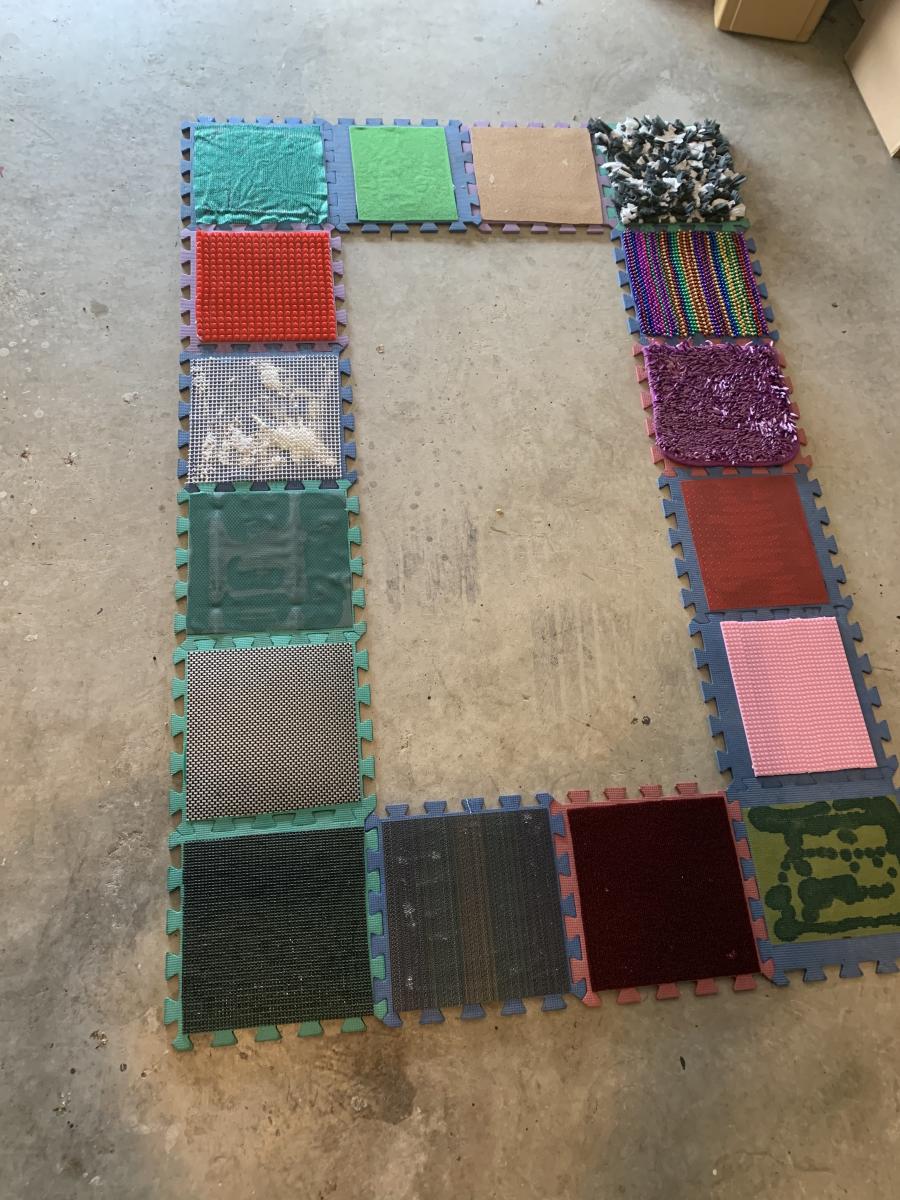
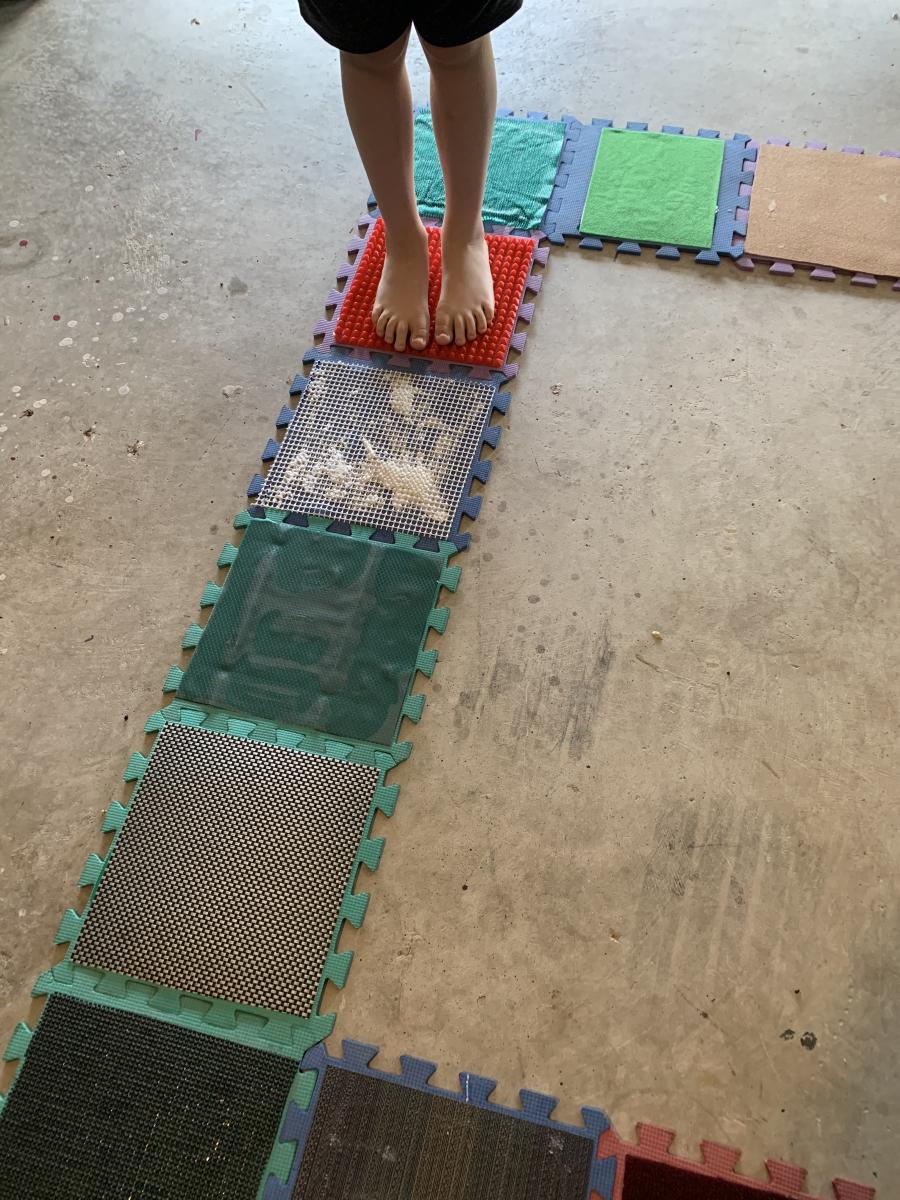
The Importance of Sensory Exploration
The article Sensory Play & Gross Motor Fun | Texture Walk provides a helpful overview of the importance of sensory play and tactile exploration. I shared this article with the team and it made everyone aware that this would be something to try with our student. While the article was written for early intervention, it can be adapted for older students as well.
This project was started before the school closures for COVID-19 and unfortunately I have not been able to try it with the student for whom it was created. Another family that I work with and I decided to try five of the tiles with their son. Several days later we had a virtual lesson with the PT included, and the mother shared with us how they were working.
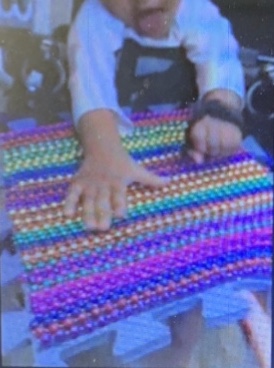
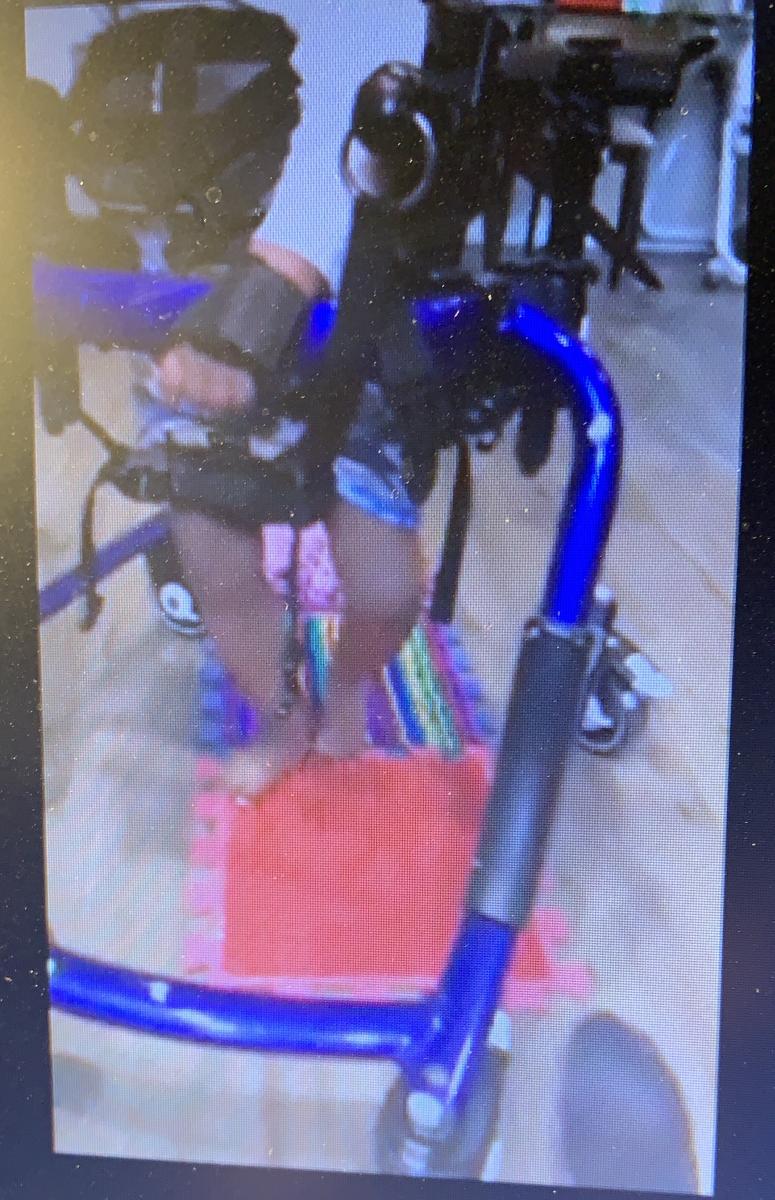
The PT was able to tell this boy’s mother how to disable the backing-up capability on the walker, as he was only moving backwards. While he was using the walker, he first explored the textures with his toes before using more of one foot and then the other. He usually babbles constantly, but he became quiet as he explored these textures. His mother took him out of the walker and he explored the tactile squares with his hands! He rolled back and forth as he explore them. Once back in his walker, he explored each of the tiles as his mother held them. He squealed with great excitement as he explored each one.
During this time of quarantine and virtual lessons, I’ve been able to walk around my home and share different things with families that they might want me to make for them or ideas for activities. At the same time, families have opened drawers and cupboards, and showed me what they have that they could use. Together we create activities. While this period we’re going through is difficult at times, it’s also been fun creating materials and activities together with the families!
